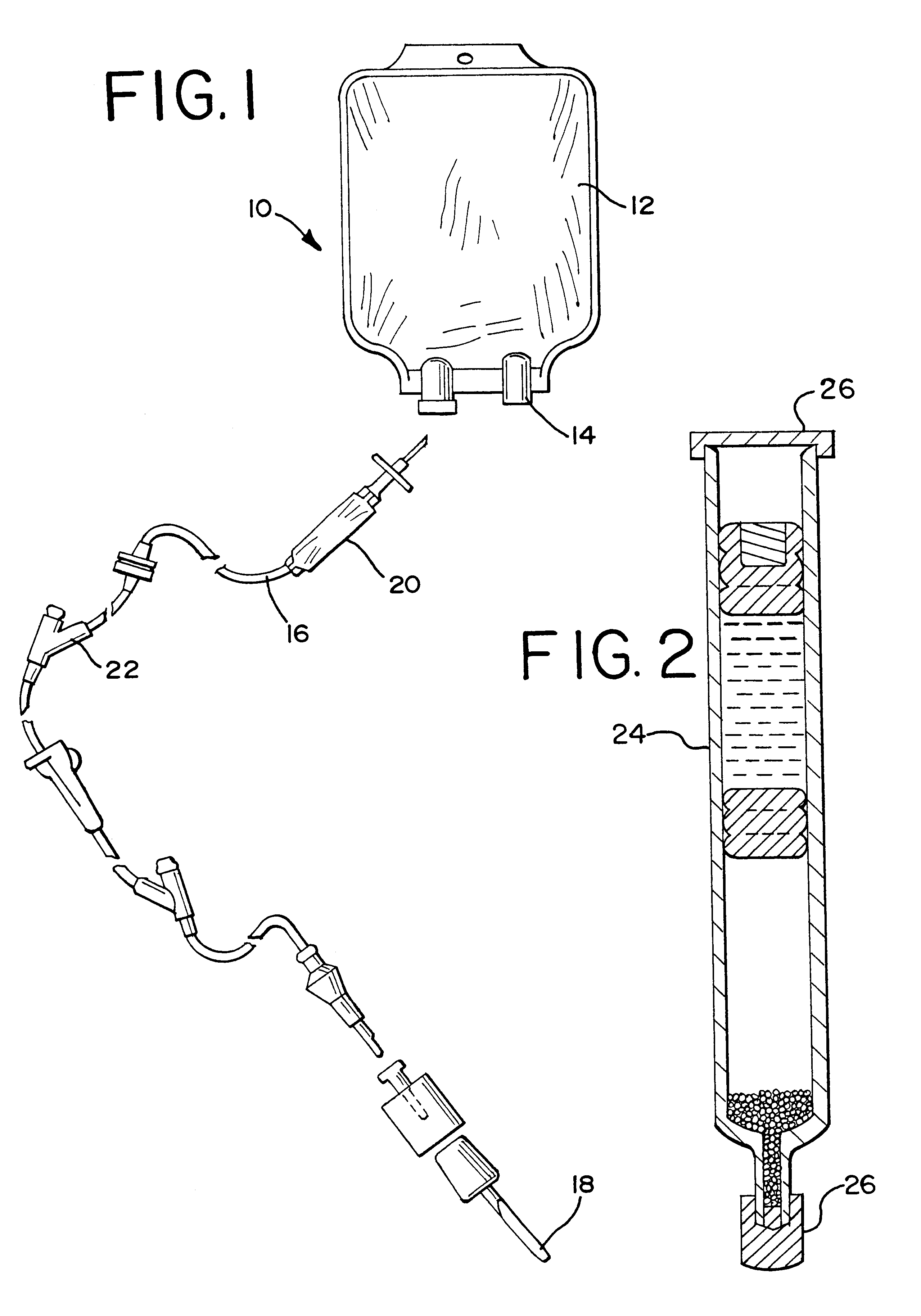Method for solvent bonding polyolefins
a solvent bonding and polyolefin technology, applied in the field of solvent bonding polyolefins, can solve the problems of ineffective solution, bio-tech drug formulation trouble, inability to solve, etc., and achieve the effects of reducing catalyst activity, low copolymerization efficiency, and low reactivity
- Summary
- Abstract
- Description
- Claims
- Application Information
AI Technical Summary
Benefits of technology
Problems solved by technology
Method used
Image
Examples
example i
Test Methods for Resin Properties
Tensile Modulus: ASTM D638.
Flexural Modulus: ASTM D790.
Glass Transition Temperature: DSC.
Light Transmitance: ASTM DI 003.
example ii
Resin Properties
(1) COC Resins:
Topas resins are produced by Ticona, a member of the Hoechst Group.
CZ Resin is marketed by the Daikyo Gomu Seiko and The West Company.
Zeonex resin is produced by Nippon Zeon Co.,Ltd.
(2) Non-COC Resins:
(3) Solvents used in the examples:
All solvents were purchased from the Sigma-Aldrich Co.
The solubility parameters reported below are the Hansen Solubility Parameters at 25 degree C, as listed in the Polymer Handbook, 3.sup.rd Ed., Chapter VII, Pages 540-544 unless otherwise specified.
example iii
Test Articles and Solvent Bonding Test Results
All the COC blends set forth in the table below were prepared using a Brabender mixer, mixed at 250.degree. C. at 50 rpm for about 4 minutes, and then compression molded into 0.010" to 0.025" thick sheets at 450.degree. F.
IV. Examples of Using Different Solvents to Bond COC Containing Devices
V. Examples of Cements Made by Dissolving the COC Resin in Solvents for Bonding Flexible Polyolefin Components
The COC cements were prepared by dissolving the COC into a solvent at room temperature. Elevated temperature such as 50.degree. C. can be used to enhance the speed of the preparation of the cement solution.
VI. Examples of Bonding a Flexible Component to a Flexible Component Using COC Cement Compositions of Example IV
Tubings made of ULDPE (Engage 8003) or EVA (Elvax CM 576) were extruded and cut into segments. Cement was applied between bonding interfaces of the tubing segments identified in the following table. The bonding was done by applyin...
PUM
| Property | Measurement | Unit |
|---|---|---|
| glass transition temperature | aaaaa | aaaaa |
| glass transition temperature | aaaaa | aaaaa |
| density | aaaaa | aaaaa |
Abstract
Description
Claims
Application Information
 Login to View More
Login to View More - R&D
- Intellectual Property
- Life Sciences
- Materials
- Tech Scout
- Unparalleled Data Quality
- Higher Quality Content
- 60% Fewer Hallucinations
Browse by: Latest US Patents, China's latest patents, Technical Efficacy Thesaurus, Application Domain, Technology Topic, Popular Technical Reports.
© 2025 PatSnap. All rights reserved.Legal|Privacy policy|Modern Slavery Act Transparency Statement|Sitemap|About US| Contact US: help@patsnap.com

